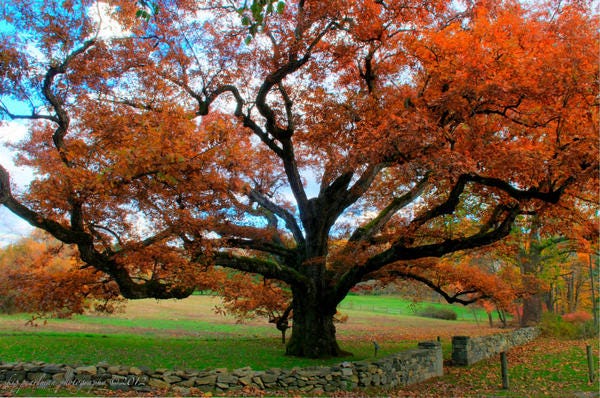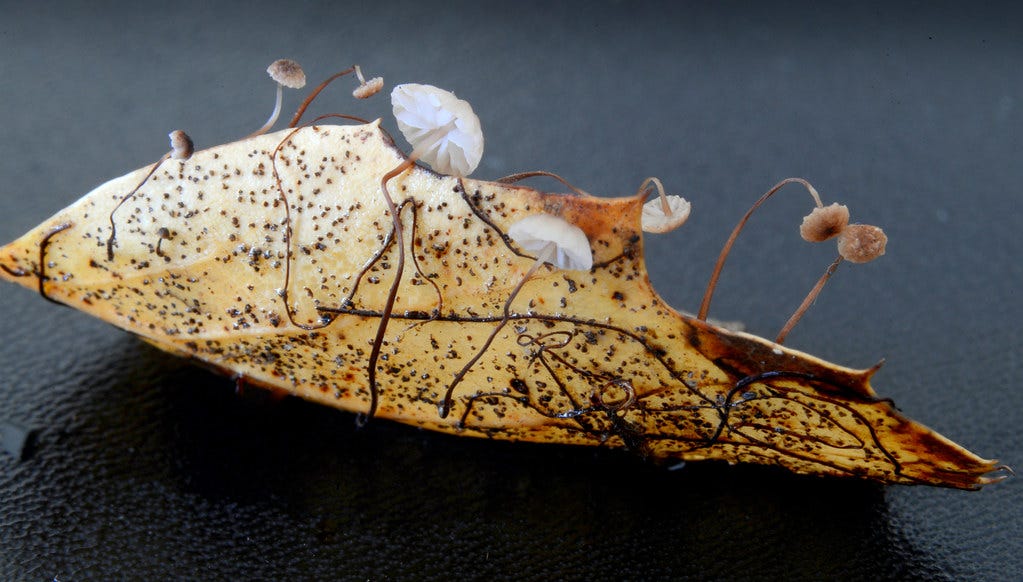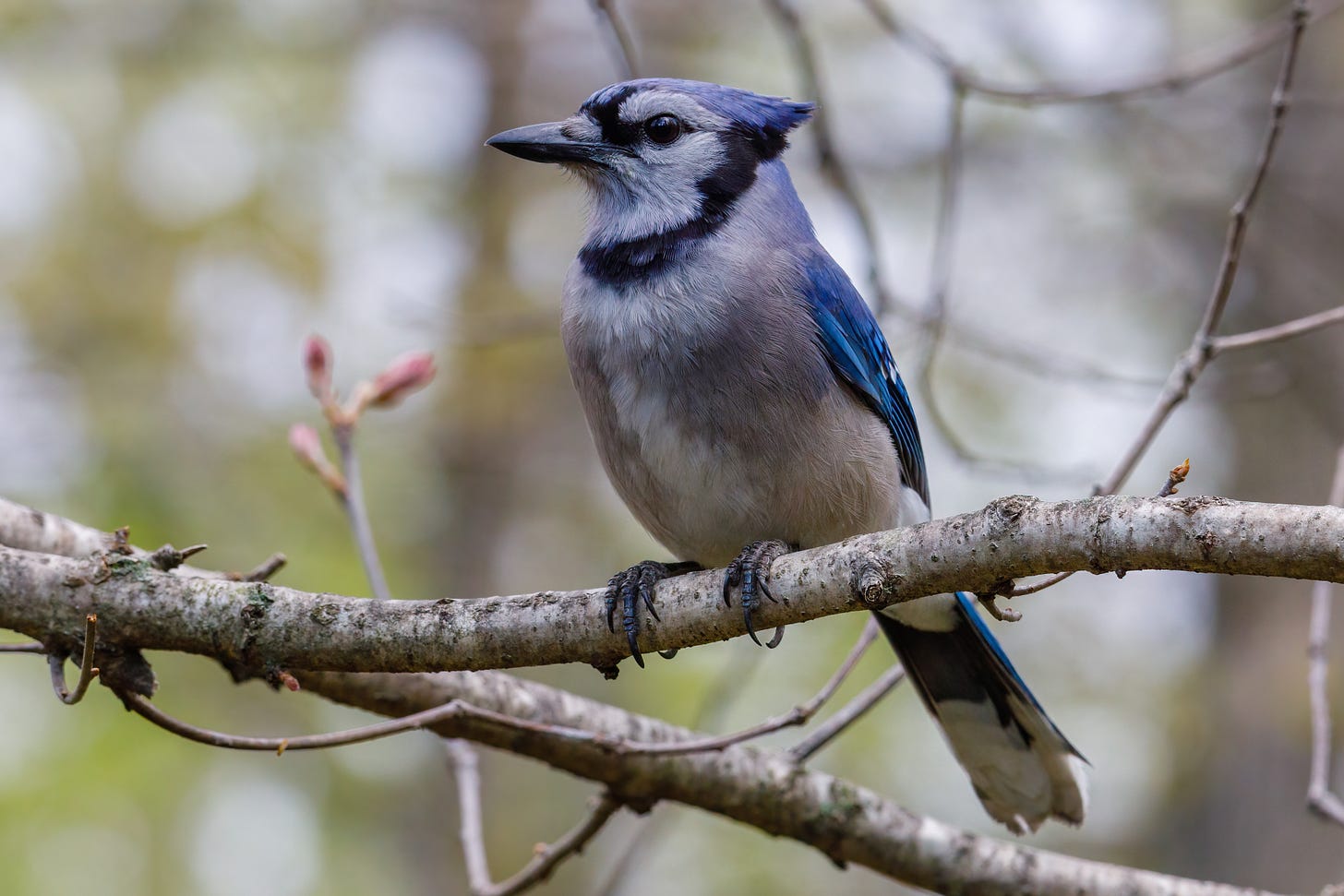How Planting One Oak Tree in Your Backyard Can Do Wonders for the Environment (And Property Value)
Oaks live for hundreds of years and support more forms of life than any tree in North America.
Some 55% of all US adults turned to gardening during the pandemic and another 20% “seriously considered” it but my love for plants dates back to when I was only a few years old and doing whatever I could in the front garden of the home where I was born and lived till I left for London soon after high school.
I have since lived mostly in rented accommodation with no backyard with the exception of the last few years. Now, thanks to savvy investments in stocks and crypto, I seem to be on track to one day realizing the life long dream of owning a house and curating the garden of my choice and the first thing I will do is plant an oak tree.
In his book, “Bringing Nature Home,” Douglas Tallamy writes that one Oak tree supports 4,000 species of animals and insects, more than any other tree. For instance, caterpillars love to gravitate towards oaks because they feed on its leaves and buds. Oaks help feed 897 species of caterpillars in the U.S. (Tallamy recorded 511 species interacting with an oak tree on his property in Pennsylvania far above the number of types of caterpillars that interacted with other trees like maples 295, ironwood 77 and 35 with sweetgum). Other trees may fall prey to caterpillar infestation but not oaks. They have a mechanism against pests that helps them recover and grow new leaves mostly without any intervention from caretakers.
Caterpillars are the favorite food for birds especially for baby birds because insects contain more proteins than beef and 96% of land birds in the country feed their young with them. That attracts birds to oaks and they also love to eat it’s fruit, acorns, which is rich in proteins, fat and carbohydrates. About two dozen species of birds consume acorns. 75% of the food eaten by insects, birds and other animals is provided by a few trees and oaks is at the top of the list.
“They are so important, critically important, in running our ecosystems, and that’s what attracts me,” Tallamy said. “Oaks are not just another plant.”
Jays are particularly fond of acorns. Oaks and jays evolved in Southeast Asia around 60 million years ago and jays adaptation to life alongside oaks is highlighted by the hook at the tip of their beak “designed to rip open an acorn husk,” according to Tallamy. Jays can store upto five acorns in their esophagus and are known to hoard acorns as emergency stock by depositing them in the leaf jitter.
“Except some are forgotten and never retrieved. And you know what comes next: Mighty oaks from little acorns grow,” says Margaret Roach, garden columnist for the New York Times.
It is not just oaks that grow from acorns.
“We should add that from tiny acorns also grow deer, gray squirrels, red squirrels, chipmunks, wild turkeys, crows, flying squirrels, rabbits, opossums, blue jays, quail, raccoons, wood ducks - more than 100 U.S. vertebrate species eat acorns,” shared the National Wildlife Foundation.
An oak tree typically lives for 300 years and some may even last a millennium. The Bedford Oak in upstate New York is 500-years old and estimates are that it will live for another 5 centuries. Of the 400 species of oaks worldwide, 90 are native to the United States and one oak can produce as much as three million acorns through its lifetime.


Deer is another animal that lives on acorns. Nature enthusiasts call the fruit the “protein bar for wildlife” that can single handedly carry animals through the winter and is a “valuable source of nutrition that is critical to deer health and reproduction.”
“A mature tree can drop as many as 700,000 leaves every year. The resulting litter is habitat for beneficial organisms, and the tree’s canopy and root system are important in water infiltration, helping rain percolate instead of running off, and purifying it in the process. Oak trees also sequester carbon,” adds Roach.
Trees suck carbon dioxide from the environment and pull in water. They use the energy of the sun to convert this into nutrients to feed the trees and in the process oxygen is released in the atmosphere, known as photosynthesis.
“The massive trunk of an ancient oak or redwood represents many tons of sequestered carbon,” said Robin Jacobs, a sustainability advocate.
Trees, however, utilize only a fraction of the carbon dioxide. New research estimates that the U.S. needs to plant 30 billion trees by 2040 to fight climate change. That creates a huge need for every American to plant at least one tree on their property and I would recommend that they go with oak not just because of its environmental benefits but also because it can increase the value of their land.
“A property flush with oak trees and mast crop can dramatically impact its recreational value. And recreational value isn’t limited to dollars earned upon the sale of a property. This value can be realized through annual revenues on top of the long-term gains possible through rural real estate investment,” according to Whitetail Properties.
A study by PNW Research Station found that a tree in front of the house adds over $7,000 to the value of the property and it can increase the home value by upto 11% if the tree is part of a beautiful and well maintained landscape.
I know that people have their reservations about oaks. Its leaves do not decompose fast enough because they contain lignins and tannins, natural chemicals that slow breakdown and that does not fit with our desire to have a neatnik lawn. Tallamy sees the leaves as “priceless litter” and advises not to remove them too early.
“The diversity and abundance of the little creatures that reside in the leaf litter that accumulates beneath an oak is astounding,” he writes, “and easily exceeds counts in the millions.”
Going back to photosynthesis - the process of plants converting carbon dioxide into nutrients - the compounds remain within the cells of the plant after it dies and all non-plant life depends on them. That is when the detritivores move in - an array of invertebrates like insects, worms, and millipedes - and eat the fallen leaves.
“After detritivores do the hard work of turning big dead things into smaller dead things, they’re rewarded by getting eaten by other animals. The result is that a lot of nutrition locked in the dead plant gets cycled back into the food web. In fact, invertebrates are a major link in turning plant matter (living or dead) into protein that keeps animals higher up the food chain alive, from birds to humans,” wrote Constance Taylor for the Bay Nature Institute.

Oak leaves have other properties too: Asian jumping worms are found in 15 states and can destroy the soil making it difficult for plants to grow but it seems like a layer of oak leaves deter the worms.
So are you sold on the idea of planting oaks? Instead of buying a tree, I recommend that you plant a fresh one using an acorn because it will be much healthier than if you transplant an established tree. I will do the same as soon as I have a house with a backyard. I hope that it lives for hundreds of years and generations of my family get to rest in its shade and admire its beauty. It comforts them in their misfortunes and rejoices with them in their successes.
As Tallamy puts it: “A yard without oaks is a yard meeting only a fraction of its life-support potential.”



